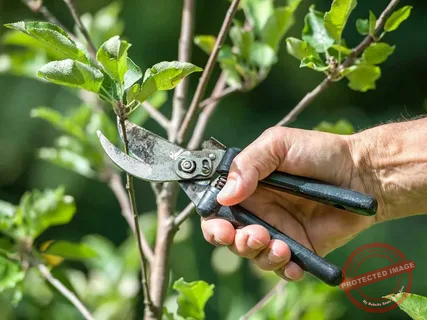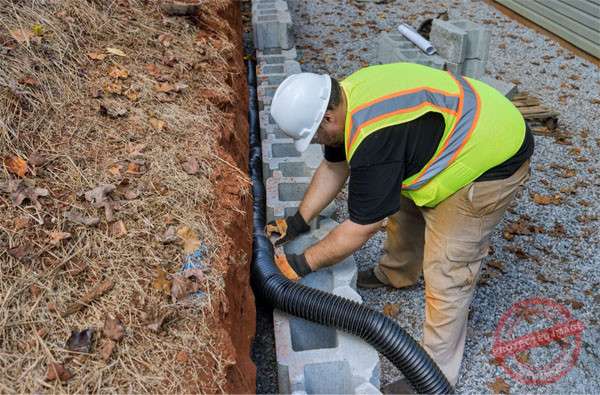Sugar snap peas are one of the most rewarding crops to grow, especially for gardeners who crave fresh, crunchy vegetables early in the season. These peas are not only sweet and delicious, but they also thrive in the cool temperatures of early spring, making them one of the first crops you can plant and harvest. Their edible pods and peas make them versatile in the kitchen, and their climbing habit adds a vertical element to your garden, maximizing space. Growing sugar snap peas is relatively simple and provides a great sense of accomplishment for both beginners and seasoned gardeners alike.
Peas are cool-season vegetables, meaning they prefer the mild temperatures of spring and fall. They don’t handle the heat well, so early spring is the ideal time to plant sugar snap peas. Getting your peas into the ground early allows them to develop strong roots before the heat of summer sets in. With proper planning and care, you can enjoy a bountiful harvest well before the heat makes gardening more challenging. For those living in colder regions, the early spring season offers the perfect window to grow sugar snap peas without much hassle.
This guide will walk you through every step of growing sugar snap peas in early spring, from selecting the best variety and preparing the soil, to planting, caring for, and harvesting your crop. Whether you’re aiming for a small garden plot or a larger-scale setup, you’ll find valuable tips and insights here to ensure a successful sugar snap pea harvest.
Preparing to Plant Sugar Snap Peas
The first step to growing sugar snap peas is proper preparation. Peas may be forgiving plants, but they thrive when given the right conditions. Planning ahead and preparing the soil, garden bed, and necessary tools will set you up for a productive season.
1. Choosing the Right Variety
Sugar snap peas come in several varieties, and the one you choose can influence how successful your early spring planting is. Some varieties are more heat-tolerant, while others are better suited for cooler, early-season growing. Popular varieties include ‘Sugar Ann,’ which matures quickly and is ideal for early spring planting, and ‘Super Sugar Snap,’ known for its larger, sweeter pods and extended harvest period.
For early spring planting, choose a variety that’s labeled as early maturing or cold-tolerant. These varieties are better suited to cooler temperatures and shorter days, giving them a head start before the weather warms up. Be sure to check the days to maturity listed on the seed packet to plan when you’ll need to harvest, typically 60-70 days after planting.
2. Site Selection and Sunlight Requirements
Sugar snap peas require plenty of sunlight to grow and develop sweet, tender pods. Choose a location in your garden that gets at least six hours of direct sunlight per day. The more sunlight, the better the yield, so find a spot that isn’t shaded by taller plants or structures.
However, sugar snap peas don’t do well in soil that’s too wet or compacted, so avoid low-lying areas where water might pool. A well-draining garden bed is essential to prevent root rot. If your garden soil tends to be heavy and compact, consider building raised beds or amending the soil with compost or sand to improve drainage.
3. Soil Preparation
Peas, like other legumes, are unique in their ability to fix nitrogen in the soil. This means they don’t require as much fertilization as other plants, but they do need well-drained, loose soil to thrive. Before planting, work compost or well-rotted manure into the soil to improve its structure and provide some initial nutrients. Aim for a slightly acidic to neutral pH level, between 6.0 and 7.5, which is ideal for pea growth.
Since peas prefer cooler soil, you can plant them as soon as the ground is workable in early spring. Peas can tolerate light frosts, so don’t worry if there’s still a chill in the air. However, wait until the soil has dried out sufficiently before planting. If the soil is too wet and cold, the seeds may rot before they have a chance to germinate.
4. Supporting Your Peas
Most sugar snap pea varieties are climbing plants that require support as they grow. Before planting, set up a trellis or support system in your garden bed. Pea plants will grow vines that need something to climb on, and providing support early on will encourage healthy growth and make harvesting easier later. You can use a variety of materials for support, such as wooden stakes, bamboo poles, or wire mesh, as long as the structure is sturdy enough to hold the weight of the mature plants.
Planting Sugar Snap Peas
Now that your garden bed is prepared, it’s time to plant your sugar snap peas. The key to a successful crop lies in timing, planting depth, and proper spacing to give the plants room to grow.
1. Timing Your Planting
The beauty of sugar snap peas is that they thrive in cooler temperatures, making early spring the ideal time to plant. In most regions, you can plant peas as soon as the soil temperature reaches 40°F (4°C). While peas can handle a light frost, planting them too early in cold, wet soil can result in poor germination. Check the forecast to ensure that extreme cold snaps are not expected before you plant.
In regions with mild winters, you can even plant peas in late winter for an early spring harvest. For gardeners in colder climates, wait until the soil is workable but still cool. The sooner you plant your peas in the spring, the better your chances of harvesting before the intense summer heat arrives.
2. Seed Preparation and Germination
Although sugar snap pea seeds can be planted directly into the ground, soaking the seeds overnight before planting can help speed up germination. This step isn’t necessary, but it can be helpful in ensuring even sprouting, especially if you’re planting in less-than-ideal conditions.
When planting, space your pea seeds about 1 to 2 inches apart in rows. The seeds should be planted about 1 inch deep. If you’re planting multiple rows, leave about 18 inches of space between rows to allow for air circulation and room for the plants to climb. Peas germinate best in soil temperatures between 40°F and 75°F, and under ideal conditions, you should see seedlings emerging within 10 to 14 days.
3. Watering and Mulching
After planting, water the seeds thoroughly to settle them into the soil. Peas need consistent moisture to germinate, but they do not like to sit in waterlogged soil. Once your seeds have sprouted, water regularly but avoid overwatering, as too much moisture can lead to root rot and disease. Ideally, water the plants at the base to keep the leaves dry, as wet foliage can invite fungal problems.
Mulching around the pea plants can help retain moisture and keep the soil cool as the weather warms. A layer of organic mulch, such as straw or shredded leaves, will also help suppress weeds, which can compete with your peas for nutrients.
4. Companion Planting with Peas
Sugar snap peas make excellent companions for many other early-season crops. Since they fix nitrogen in the soil, they benefit nearby plants that rely on this nutrient. Consider planting peas alongside crops like spinach, lettuce, and radishes, which can thrive in the same cool conditions. Avoid planting peas near onions, garlic, or other members of the allium family, as they can inhibit pea growth.
Caring for Your Sugar Snap Peas
Caring for sugar snap peas is relatively straightforward, but ensuring they have the right support, water, and protection from pests will lead to a more productive harvest. A little attention goes a long way toward helping these plants thrive.
1. Trellising and Training Pea Vines
As sugar snap peas begin to grow, they will send out tendrils that naturally grab onto nearby supports. Gently guide the young plants toward your trellis or support structure as they grow. If the plants are left unsupported, they may sprawl on the ground, making them more susceptible to disease and reducing airflow, which can lead to fungal problems.
Once the plants are established, they will continue to climb the trellis without much help. Keeping the plants off the ground also makes harvesting easier, as the pods will be more accessible and less likely to get damaged.
2. Fertilizing Sugar Snap Peas
Peas are light feeders, meaning they don’t need a lot of additional fertilization. In fact, over-fertilizing can lead to lush foliage but fewer pods. If you’ve prepared your soil well with compost or organic matter, your peas should have all the nutrients they need to thrive.
If you feel your plants are struggling, you can apply a balanced, low-nitrogen fertilizer after the seedlings have emerged. Avoid using too much nitrogen, as this can promote excessive leaf growth at the expense of the pea pods. A side dressing of compost or a balanced, all-purpose fertilizer can provide a gentle nutrient boost without overloading the plants.
3. Pest and Disease Management
While sugar snap peas are generally easy to grow, they can fall victim to pests and diseases if not properly cared for. Common pests that may target pea plants include aphids, pea weevils, and cutworms. Inspect your plants regularly for signs of infestation, such as chewed leaves or tiny insects on the foliage. If you spot pests, remove them by hand or use an organic insecticidal soap to keep their numbers under control.
Fungal diseases like powdery mildew and root rot can also affect peas, especially in wet or humid conditions. To prevent these issues, water the plants at the base and ensure good air circulation around the plants. Removing weeds and keeping the garden clean will help reduce the chances of disease spreading.
4. Harvesting and Storage
One of the joys of growing sugar snap peas is the harvest. Sugar snap peas are best picked when the pods are full but still tender. Check your plants daily as they near maturity, as peas can quickly go from perfect to overripe. The pods should be crisp and snap easily when bent.
Harvest peas regularly to encourage the plant to continue producing more pods. If left on the plant too long, the peas inside will become tough and starchy, and the plant will slow down production. You can eat sugar snap peas fresh, but they can also be blanched and frozen for longer storage.
Conclusion
Growing sugar snap peas in early spring is a fulfilling and productive gardening activity. With the right preparation, planting techniques, and care, you can enjoy a bountiful harvest before the summer heat arrives. These sweet, crunchy peas are versatile in the kitchen and easy to grow, making them a favorite for gardeners of all skill levels. Whether you have a small backyard garden or a larger plot, following the steps outlined in this guide will ensure you enjoy fresh sugar snap peas throughout the season.



